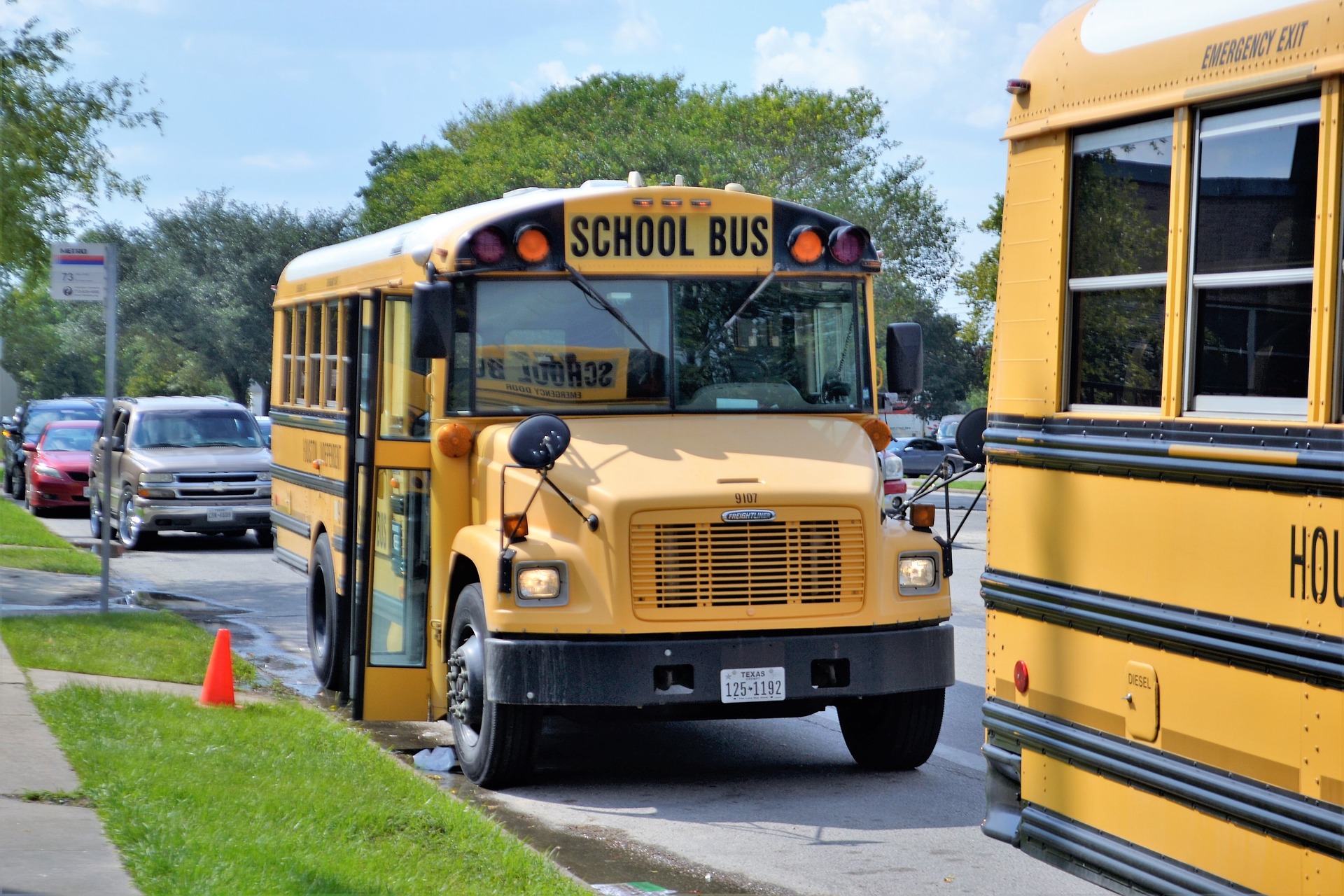How Does Public Transport Benefit The Environment: Introduction
How does public transport benefit the environment? As urban centers continue to grow and the global population surges, this question becomes increasingly significant. Understanding the environmental impact of public transport is critical, especially in the context of ongoing climate change, air pollution, and traffic congestion.
Public transport serves as more than just a convenient means for daily commuting; it is a crucial component of sustainable urban development. Utilizing buses, trains, trams, or ferries for daily travel significantly reduces the number of private vehicles on the road. The result? Less traffic congestion. As anyone who has been stuck in a traffic jam can attest, fewer cars on the road also means less stress for everyone involved.
But the benefits extend far beyond convenience and mental well-being. By reducing the sheer volume of cars, public transport contributes to lower levels of greenhouse gas emissions. This is a significant factor in combating climate change, as transport accounts for a substantial portion of global CO2 emissions. By opting for public transport, individuals can collectively contribute to a reduced carbon footprint.
Reducing traffic also has immediate environmental benefits, such as improved air quality. Cars are a major source of air pollutants like nitrogen dioxide and particulate matter, which pose serious health risks to humans and animals alike. Public transport systems, especially those that utilize cleaner, greener technologies like electric or hydrogen fuel cells, can drastically cut down the emissions of these harmful substances.
In summary, public transport is not merely a solution for getting people from one place to another. It serves as a multi-benefit tool that alleviates traffic congestion, reduces greenhouse gas emissions, and improves air quality. This article aims to offer an in-depth look into the myriad ways public transport positively impacts the environment. It also underscores the vital importance of promoting and utilizing these sustainable modes of transport in the fight against environmental degradation. Let’s take a closer look…
How Does Public Transport Benefit The Environment: Reduced Greenhouse Gas Emissions
Less reliance on individual vehicles
By utilizing public transportation, you reduce your reliance on individual vehicles. Instead of each person driving their own car, multiple individuals travel together in a single vehicle. This reduces the overall number of vehicles on the road, leading to a significant reduction in greenhouse gas emissions.
Lower carbon dioxide emissions
Public transport produces fewer carbon dioxide emissions compared to individual vehicles. Buses and trains are capable of carrying a large number of passengers at once, reducing the need for multiple cars on the road. This results in less fuel consumption and subsequently lower carbon dioxide emissions, contributing to a cleaner and healthier environment.
Reduced air pollution
Public transportation plays a crucial role in reducing air pollution. By replacing several individual cars with buses or trains, the amount of harmful pollutants released into the air decreases significantly. This helps combat common environmental issues such as smog and poor air quality, resulting in cleaner and fresher air for everyone to breathe.
How Does Public Transport Benefit The Environment: Energy Efficiency
Optimized fuel consumption
Public transport systems are designed to be highly efficient in terms of fuel consumption. Buses and trains are optimized to carry a large number of passengers, minimizing the need for individual vehicles that often consume more fuel per person. By choosing public transportation, you contribute to energy efficiency by reducing overall fuel consumption.
Regenerative braking
Some public transport systems also employ regenerative braking technology. This innovative mechanism allows the capture and storage of energy that is produced during the braking process. By harnessing this energy and reusing it, public transportation systems become even more energy-efficient, resulting in reduced environmental impact.
Carpooling benefits
Public transport, by its very nature, encourages carpooling. When several individuals travel together in a single vehicle, it significantly reduces the number of cars on the road. Carpooling not only helps to reduce traffic congestion but also contributes to energy efficiency and lowers greenhouse gas emissions. By choosing public transportation and participating in carpooling efforts, you actively foster a greener and more sustainable environment.

Check Out Our Top Eco Friendly Product Picks On Amazon Here
How Does Public Transport Benefit The Environment: Conservation of Natural Resources
Reduced fuel consumption
As mentioned earlier, opting for public transportation reduces overall fuel consumption. By utilizing buses, trams, or trains, you contribute to the preservation of valuable fuel resources. This conservation of fuel helps ensure that resources are available for longer periods, benefiting not only the present but also future generations.
Preservation of land and water resources
With reduced individual vehicle usage, the need for road construction and maintenance decreases. This ultimately leads to the conservation of land and water resources. By minimizing the expansion of road networks, public transport helps preserve natural habitats, ecosystems, and water bodies. This conservation effort contributes to maintaining ecological balance and protecting biodiversity.
Reduced need for road construction
Expanding roads to accommodate an increasing number of vehicles can be detrimental to the environment. It often involves clearing forests, disrupting wildlife habitats, and consuming vast amounts of resources. By promoting public transportation, we can reduce the need for extensive road construction. This helps preserve natural landscapes and minimizes the environmental impact associated with road development.
How Does Public Transport Benefit The Environment: Reduced Traffic Congestion
Lower number of vehicles on the road
Public transport is an effective solution to reduce traffic congestion. By encouraging people to use buses, trains, and other forms of mass transit, the number of individual vehicles on the road decreases. This leads to smoother traffic flow and less time wasted in jams, benefiting everyone involved.
Improved traffic flow
With fewer vehicles on the road, public transport helps improve overall traffic flow. Congestion can reduce the efficiency of road networks, causing delays and frustration for commuters. By utilizing mass transit options, you actively contribute to a more efficient and streamlined traffic system, easing the burden on existing infrastructure.
Shorter travel times
By reducing traffic congestion, public transportation helps to shorten travel times for everyone. With less time spent stuck in traffic, you have the opportunity to reach your destination more quickly and efficiently. The availability of reliable and punctual public transportation ensures that you can plan your journeys with greater certainty, leading to improved productivity and a better quality of life.

Improved Air Quality
Reduced emission of harmful pollutants
Public transportation significantly reduces the emission of harmful pollutants compared to individual vehicles. Buses and trains are designed with modern emission control technologies that help minimize the release of pollutants into the atmosphere. By choosing public transport, you contribute to improved air quality and create a healthier environment for all.
Lower levels of particulate matter
Particulate matter, consisting of tiny particles suspended in the air, can be detrimental to human health when inhaled. Public transport systems typically emit lower levels of particulate matter compared to individual cars. By opting for mass transit options, you actively contribute to reducing the presence of harmful particles in the air, leading to improved respiratory health and overall well-being.
Health benefits
Improved air quality resulting from reduced emissions has several health benefits. Cleaner air reduces the risk of respiratory diseases, allergies, and other health issues associated with poor air quality. By choosing public transportation, you indirectly promote a healthier lifestyle and contribute to a community-wide improvement in public health.
Reduced Noise Pollution
Quieter streets and neighborhoods
Public transport plays a significant role in reducing noise pollution in urban areas. Unlike individual vehicles, buses and trains produce considerably less noise, resulting in quieter streets and neighborhoods. This reduction in noise levels creates a more peaceful and tranquil environment for residents and promotes a sense of well-being.
Enhanced quality of life
The reduction of noise pollution through public transportation contributes to an enhanced quality of life. Quieter streets and neighborhoods facilitate better concentration, improved sleep patterns, and overall mental well-being. By choosing public transport, you are actively creating a more pleasant and enjoyable living environment for yourself and others.
Improved sleep patterns
Excessive noise can disrupt sleep patterns and lead to sleep deprivation, which can negatively impact health and overall well-being. By promoting public transportation, noise pollution can be significantly reduced, contributing to improved sleep patterns and better rest for everyone. This, in turn, enhances daily productivity, mental clarity, and overall quality of life.

Promotion of Sustainable Development
Encouragement of compact, walkable communities
Public transport systems often promote the development of compact, walkable communities. By reducing the dependence on individual vehicles, cities and neighborhoods can be designed to be more pedestrian-friendly. This encourages walking and cycling, leading to healthier lifestyles and reduced carbon footprints. Compact, walkable communities also foster a sense of community and promote social interaction.
Support for public spaces
Robust public transportation networks often support the creation and maintenance of public spaces. Public squares, parks, and recreational areas are vital components of sustainable development. By promoting public transport, you indirectly contribute to the preservation and enhancement of public spaces. These areas provide opportunities for relaxation, socialization, and community gatherings, contributing to a vibrant and inclusive urban environment.
Boost to local economies
Public transportation can have a positive impact on local economies. By providing affordable and accessible transportation options, public transit encourages individuals to visit local businesses and support the local economy. The accessibility and convenience of public transport also attract businesses to areas served by transit networks, stimulating economic growth and creating job opportunities.
How Does Public Transport Benefit The Environment: Increased Accessibility
Enhanced mobility for all
One of the significant advantages of public transportation is the enhanced mobility it provides to individuals. Public transit systems are designed to be accessible to people of all ages and abilities. This inclusivity ensures that everyone, regardless of their personal circumstances, has the freedom and flexibility to travel and access essential services, promoting equal opportunities for all members of the community.
Improved access to jobs and services
Public transportation networks improve access to employment opportunities and essential services. By connecting different areas within a city or region, public transit enables individuals to reach their workplaces, educational institutions, healthcare facilities, and more. This improved access positively impacts the overall efficiency of the workforce and ensures that essential services are accessible to everyone.
Greater social inclusion
Public transportation promotes social inclusion by bridging geographical barriers and connecting communities. It brings people from different backgrounds and neighborhoods together, fostering interaction, understanding, and a sense of unity. By providing equal access to transportation, public transit systems break down barriers and contribute to a more inclusive society.

Positive Impacts on Public Health
Increased physical activity
Public transportation often involves walking or cycling to and from transit stops, which promotes increased physical activity. Regular physical exercise is essential for maintaining good health and preventing chronic diseases. By incorporating physical activity into your daily commute, you support a healthier lifestyle and actively contribute to your overall well-being.
Lower risk of chronic diseases
Regular physical activity reduces the risk of developing chronic illnesses such as heart disease, obesity, and diabetes. By opting for public transportation and incorporating physical activity into your daily routine, you are taking a proactive step towards preventing these diseases. Public transport not only provides a means of travel but also contributes to the improvement of public health outcomes.
Reduced road accidents
The use of public transportation can help reduce the number of road accidents. With fewer individual vehicles on the road, there is a decrease in the likelihood of accidents caused by human error, speeding, and reckless driving. By choosing public transportation, you contribute to a safer road environment for everyone, reducing the occurrence of accidents and their associated injuries.
Social and Economic Benefits
Cost savings for individuals
Public transportation offers significant cost savings for individuals. Taking public transport is often more affordable than owning and maintaining a personal vehicle. By choosing public transport, you save on fuel costs, parking fees, insurance premiums, and vehicle maintenance. These savings can be redirected towards other essential expenses or used to enhance your quality of life.
Job creation
The development and operation of public transportation systems create job opportunities in various sectors. From vehicle manufacturing and maintenance to transit operations and customer service, public transport infrastructure supports a wide range of employment opportunities. By opting for public transportation, you indirectly contribute to job creation and provide vital employment opportunities for individuals in your community.
Reduction in income inequality
Public transportation plays a role in reducing income inequality. It provides reliable and affordable transportation options for individuals who may not have the means to own a private vehicle. By ensuring equal access to transportation, public transit helps bridge socioeconomic gaps and promotes a more egalitarian society.
Public transportation offers numerous environmental, social, and economic benefits. By reducing greenhouse gas emissions, promoting energy efficiency, conserving natural resources, and reducing traffic congestion, public transport helps create a greener and more sustainable future. Additionally, public transportation improves air quality, reduces noise pollution, and positively impacts public health. It also contributes to the promotion of sustainable development, increased accessibility, and social and economic benefits for individuals and communities alike. By opting for public transportation, you are actively participating in building a more sustainable and inclusive society.
How Does Public Transport Affect the Environment: Future Possibilities
As we’ve seen, public transport already plays a significant role in mitigating environmental degradation. But what does the future hold? Technological advancements and innovative thinking are shaping new modes of public transportation that could have even greater environmental benefits. Here are some exciting possibilities on the horizon.
Hyperloop Technology
Hyperloop is an emerging mode of passenger and freight transportation that consists of a sealed tube through which a pod can travel free of air resistance. The idea is to move people and goods at unprecedented speeds—potentially exceeding 700 miles per hour. The key environmental benefit here is the efficiency: hyperloops could be powered by renewable energy sources like solar or wind, and their high speeds and efficiency could dramatically reduce travel times and the associated energy consumption. As a result, hyperloops could offer a fast and sustainable alternative to short-haul flights, which are currently a significant source of greenhouse gas emissions.
Autonomous Electric Buses
The future of public buses could very well be autonomous and electric. Autonomous technology would make bus travel more efficient by optimizing routes and reducing idle time, while electric powertrains would eliminate tailpipe emissions entirely. The net result is a public transport system that is both more convenient and more environmentally friendly. Several cities are already experimenting with these technologies, offering glimpses of what a fully realized autonomous electric bus network might look like.
Urban Air Mobility (UAM)
Imagine a future where small electric aircraft provide on-demand, short-distance flights across city skylines, dramatically reducing the time spent in traffic. This concept, known as Urban Air Mobility (UAM), is under active development and could become a reality within the next decade. Electric vertical takeoff and landing (eVTOL) aircraft are expected to be the backbone of UAM. These vehicles would be powered by electricity, thus reducing the carbon footprint associated with short urban commutes and offering a cleaner alternative to fossil fuel-powered vehicles.
Solar-Powered Trains
Solar power is one of the most abundant and environmentally friendly energy sources available. Integrating solar panels into train infrastructure—like stations and even the roofs of the trains themselves—can offset electricity needs and lower greenhouse gas emissions. In countries with abundant sunshine, solar-powered trains could be a highly sustainable means of public transportation.
Bicycle Sharing Programs and E-Scooters
While not as technologically flashy as hyperloops or autonomous buses, expanded bicycle-sharing programs and electric scooters offer a clean, low-tech solution for last-mile travel. By offering convenient, point-to-point travel for short distances, these options can reduce the need for car trips, thereby reducing emissions and traffic congestion. Coupled with more traditional forms of public transport like buses and trains, they offer a comprehensive solution that can be both green and convenient.
These are just a few of the future possibilities in public transport that hold promise for even greater environmental benefits. As technology evolves, the opportunity to create a more sustainable, efficient, and cleaner transport network becomes increasingly feasible. The future of public transport not only holds the promise of a more convenient life but also the potential for a significantly healthier planet.

How Does Public Transport Affect the Environment: Conclusion
In the face of mounting environmental challenges, from the escalating climate crisis to deteriorating air quality in urban centers, the role of public transport has become increasingly indispensable. As we have explored throughout this article, public transport isn’t just a mechanism for moving people efficiently across cities; it’s a linchpin in the larger ecosystem of sustainable living. The impacts are multifaceted, offering both immediate and long-term benefits that contribute to environmental conservation.
Firstly, by reducing the number of private vehicles on the road, public transport directly contributes to easing traffic congestion. This is not just a matter of convenience; it’s a significant step in reducing the stress and mental toll that congested roads can exert on the population. More open roads mean more efficient travel, which in turn leads to reduced fuel consumption and lower emissions of greenhouse gases and air pollutants.
Secondly, public transport is a catalyst for lowering greenhouse gas emissions, a crucial aspect in battling climate change. As transportation accounts for a significant slice of global CO2 emissions, shifting to public transport can result in considerable reductions, aiding in the global effort to limit temperature rises and mitigate the effects of climate change. Moreover, advancements in clean technologies, such as electric and hydrogen fuel cell buses or trains, hold the promise of even more eco-friendly public transit options in the near future.
Thirdly, improved air quality is another compelling advantage of expanded public transport usage. With fewer cars emitting harmful pollutants like nitrogen dioxide and particulate matter, the air becomes cleaner, leading to better public health. This can reduce healthcare costs and improve quality of life, particularly for those with respiratory issues or those who live in densely populated areas.
Finally, public transport supports broader goals of sustainable urban development. Well-designed transit systems not only facilitate ease of movement but also promote more responsible land use, enabling higher-density living and reducing the pressure to expand cities outward into undeveloped land. This holistic approach protects natural habitats and limits the environmental costs of sprawling urbanization.
So, how does public transport affect the environment? The answer is clear: in ways that are broad, deep, and unequivocally positive. As individuals and communities, our choices matter. Opting for public transport is not just a personal choice for convenience; it’s a collective choice for a more sustainable and livable world. It’s a decision that affects not just us, but future generations. Therefore, the promotion and utilization of public transport should be at the forefront of environmental and urban planning policies globally. It is not just a matter of transportation; it is a vital strategy for a more sustainable future for all.




